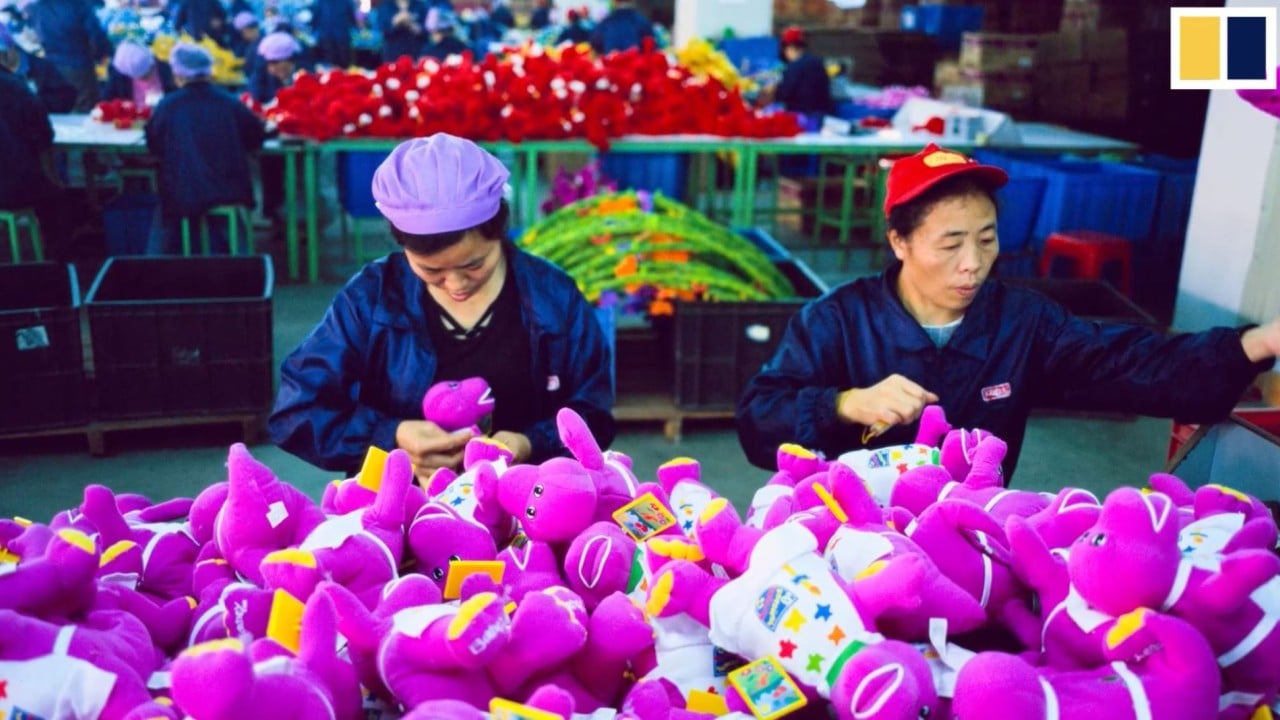
Explainer | China economy: latest data about world’s second largest economy
- China is the world’s second largest economy behind the United States
- Gross domestic product (GDP) growth rate, consumer price index, purchasing managers’ indices, trade and industrial production are all key indicators
A new version of this story has been published. Click here for the latest data about China's economy.
China’s economic data paint a comprehensive picture of the state of the world’s second largest economy.
These include data on gross domestic product (GDP), the consumer price index (CPI), the producer price index (PPI), industrial production and profits, purchasing managers’ indices (PMI), retail sales, foreign exchanges reserves, imports and exports, as well as the trade balance.
However, the accuracy of official Chinese economic data has been called into question, given the lack of transparency on how it is generated.
Gross domestic product (GDP) growth rate: 6.5 per cent (Q4 2020)

01:38
What is gross domestic product (GDP)?
Consumer price index (CPI): -0.2 per cent (February 2021)
China’s CPI measures changes in the prices paid by consumers for a basket of goods and services. It is an important way to measure changes in purchasing trends and to track inflation. China has never disclosed the weighting of its CPI “basket”, but estimates suggest food, tobacco and alcohol make up about 30 per cent, with pork believed to be the most heavily weighted product.
Due to the African swine fever outbreak, which resulted in more than 100 million pigs either dying from the disease or culling since an outbreak started in August 2018, pork prices skyrocketed in 2019, pushing China’s CPI to its highest levels in eight years.
Producer price index (PPI): 1.7 per cent (February 2021)
China’s PPI measures the changes in the prices manufacturers charge wholesalers for their goods, so-called factory gate prices. It is an early indicator of changes in consumer prices, as it offers foresight about how much goods will cost before they hit the shelves.
While China’s consumer price index (CPI) measures changes from the consumers’ perspective, PPI takes the seller’s viewpoint. China’s PPI dropped into negative territory in the second half of 2019, meaning manufacturers were increasingly having to discount their products due to the slowdown in the economy. This continued at the start of 2020 due to the coronavirus outbreak.

01:10
What are CPI and PPI?
Official manufacturing purchasing managers’ index (PMI): 51.9 (March 2021)
The official PMI largely measures the sentiment among larger firms, many which are state owned. It is compiled from surveys of business owners, purchasing managers and supply chain managers, gauging changes in things like production, new orders, employment and delivery times.
Official non-manufacturing purchasing managers’ index (PMI): 56.3 (March 2021)
The official PMI largely measures the sentiment among larger firms, many which are state-owned. It is compiled from surveys of business owners, purchasing managers and supply chain managers, gauging changes in production, new orders, employment and delivery times.
Caixin manufacturing purchasing managers’ index (PMI): 50.6 (March 2021)
The PMI produced by Markit for Chinese business magazine Caixin measures sentiment among smaller, largely private firms. It is compiled from surveys of business owners, purchasing managers and supply chain managers, gauging changes in production, new orders, employment and delivery times.

01:07
What is the purchasing managers' index (PMI)?
Caixin services purchasing managers’ index (PMI): 54.3 (March 2021)
The PMI produced by Markit for Caixin magazine largely measures sentiment among smaller, largely private firms. It is compiled from surveys from business owners and supply chain managers, gauging changes in production, new orders, employment and delivery times.
Imports: 22.2 per cent (January/February 2021)
Imports have become an increasingly closely-watched gauge of China’s economic health, as it transitioned away from the export-driven growth model towards a more consumption-based model.
Exports: 60.6 per cent (January/February 2021)
China's export-driven economy was for decades the workshop of the world. In 2001, when China joined the World Trade Organisation (WTO), it accounted for 4 per cent of the world’s exports, and by 2017, that had risen to 13 per cent. The trade war with the United States, though, damaged China's exports as tariffs made its goods more expensive for American buyers. The coronavirus outbreak subsequently damaged overseas demand for Chinese products, leading many analysts to expect a huge slump in exports over the second quarter of the year.
Trade balance: US$103.25 billion (January/February 2021)
China’s balance of trade is the difference between the monetary value of a nation's exports and imports over a certain time period. It became a central issue for US President Donald Trump, who raged against America’s trade deficit with China, because China sells far more goods to the United States than it buys.
Retail sales: 33.8 per cent (January/February 2021)
This has become increasingly important in China as it attempts to switch from an export-driven economy to one that relies on domestic consumption.
Industrial profits: 179 per cent (January/February 2021)
This covers the profits received from the principal business of industrial enterprises above designated size.
Industrial production: 35.1 per cent (January/February 2021)
Want to know more?

